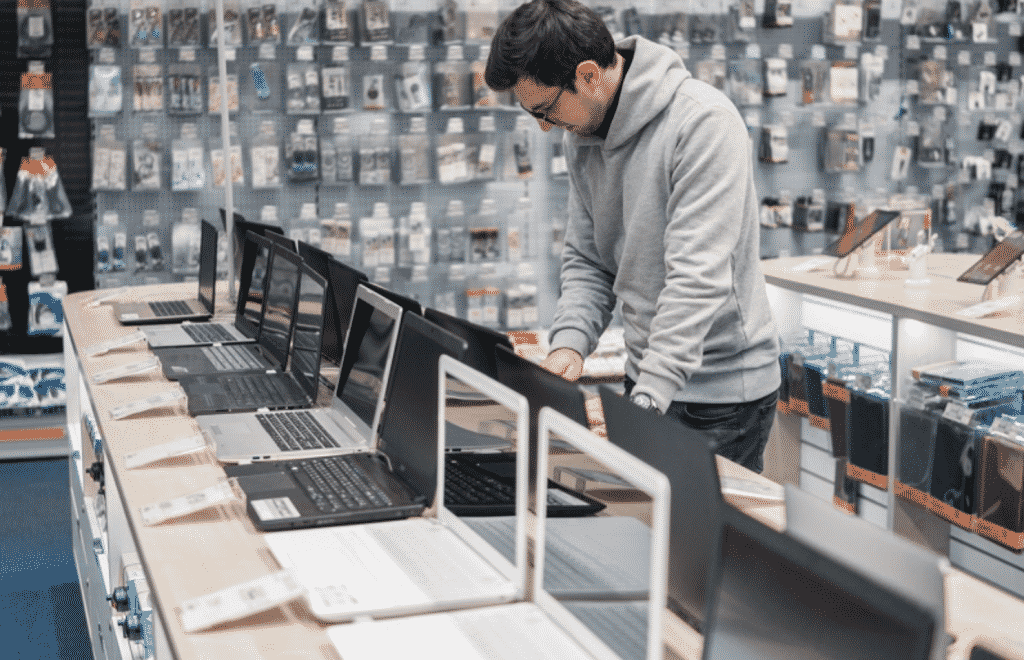The laptop is small enough to be carried around, but powerful enough to run complex applications. Notebooks are great for serious work and play, whether you’re on the move or at home. Although smartphones and tablets are popular, many people know that laptops are better for everything. From writing research papers to watching videos and even playing games, it’s easier to use a laptop. But the question is what type of laptop should I get?
The laptop shopping process can seem overwhelming at first glance. There are many models to choose from, each with a different price and operating system. These six tips will help you select the right laptop for your needs and budget.
1. A Smaller Screen Is More Portable.
The majority of laptops have screens sizes between 11 and 17 inches. The whole system is designed to fit the display. This means that smaller notebooks are more portable and lighter, while larger notebooks are heavier and bulkier. A 15-inch notebook is good if you don’t use the laptop often. A model with a 13 or 14-inch screen like the Dell XPS 13 may be the best choice if you plan on using the laptop as a tablet or to carry it around. A model with an 11.6- or 12.5 inch display will be easier for children under 12. If the laptop will be used on your desk, a 17-inch model is best.
2. A Minimum Resolution Of 1080p Is Recommended.
A laptop with a resolution of at least 1080p is recommended if you have the budget (they are even available for as low as $400). The HD resolution allows you to easily read web pages without scrolling, and can stack multiple windows side-by side for multitasking.
3. A Laptop That Lasts At Least 8 Hours Should Be Considered.
Look for a laptop with at least 8 hours battery life. The Asus ZenBook UX330UA is a great example of a durable laptop that’s affordable. It can last for up to 9 hours on a single charge. Gaming laptops is a rare exception to this rule as they consume more battery.
4. Chromebooks Are Great For Children, But Windows And MacOS Are Better For Everyone.
Chrome OS laptops are very popular in schools. They are easy to use for children and are difficult to infect with malware. The Asus Chromebook Flip C302CA is currently the best Chromebook. For most users, Windows 10 or MacBook laptop will offer more functionality. When deciding between Windows or macOS, Windows offers more options than macOS. This includes touch screen laptops and MacBooks offer better security.
5. If You Require A Touch Screen, A 2-In-1 Is The Best Choice.
There are many 2-in-1 laptops that can switch between tablet and clamshell modes. These systems, such as the Lenovo Yoga 920 with touch screens, are great, but you can often get a better laptop for your money if a traditional clamshell-style laptop is chosen. Touch screen clamshells are more expensive and last longer than non-touch screens.
6. Key Specifications: Core i5, 8 GB Ram, 256 GB SSD.
A minimum specification for a laptop that costs more than $600 should include an Intel Core i5 processor (or Intel Core i7), 8GB of RAM, a 256GB solid-state drive (SSD) and a 1080p screen. An SSD is better than a hard drive because all your programs will load quicker.
7. Consider Graphics Chip for Gaming or 3d Objects Creation
An integrated graphics chip (one that uses system memory) is fine if you aren’t playing PC games, creating 3D objects, or editing high-resolution video. Intel’s Iris Xe graphics is a good example. A discrete Nvidia or AMD graphics processor is necessary if you have any of these needs. There are high- and low-end GPU chips, just like CPUs. Today’s low-end gaming and workstation systems usually use Nvidia MX450 GPUs or GTX 1660 GPUs.
Laptop insurance is a must have for all laptop owners as now you have invested hefty amount on it. It is important to take care of your laptop and to make sure that you are covered in case anything happens. If you are interested to learn more about laptop insurance then please visit Quoteradar gadget insurance.
